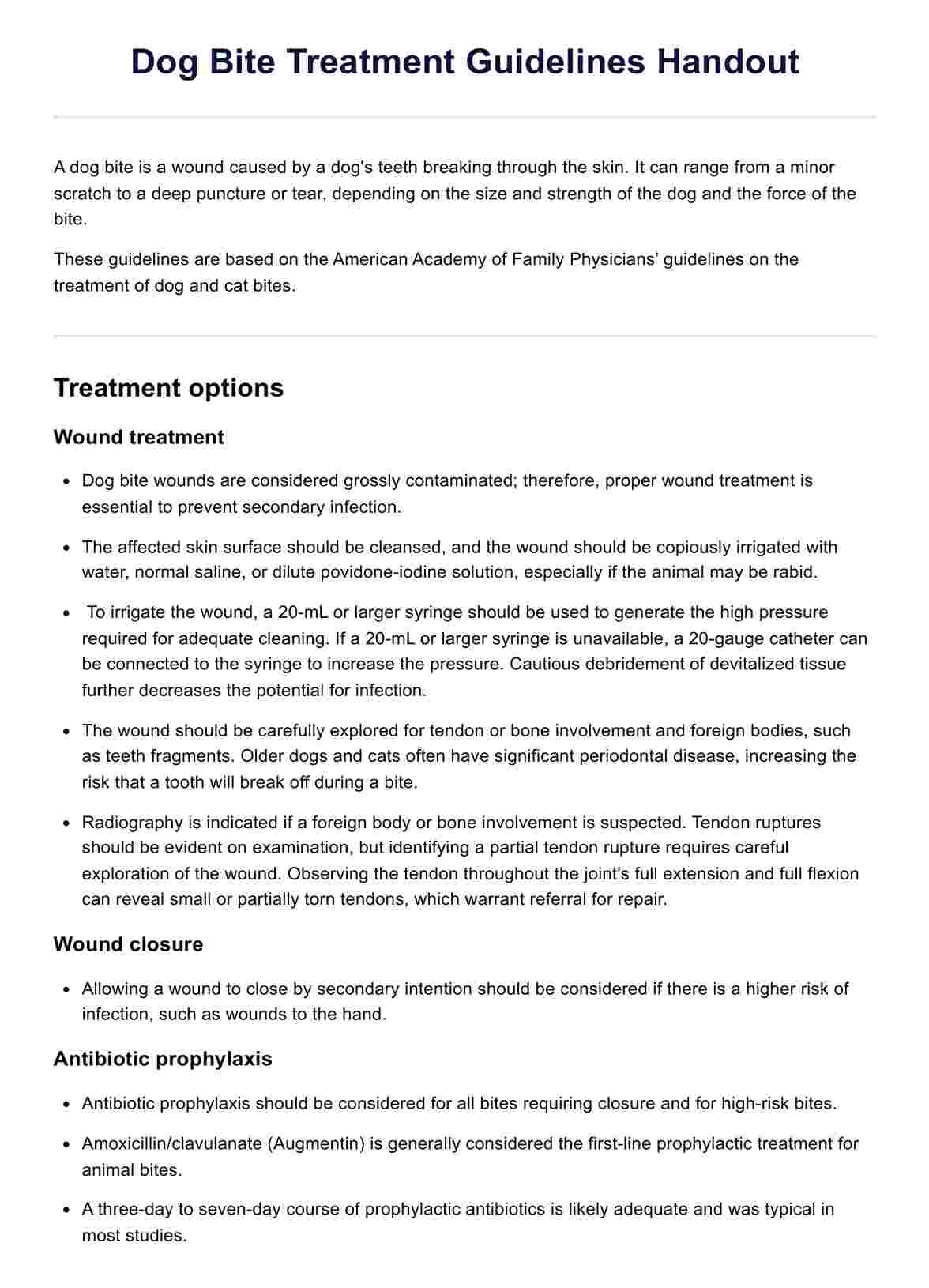Begin by assessing the severity of the bite. Clean the wound thoroughly with soap and water, apply antiseptic, and cover it with a clean bandage. Evaluate for signs of infection and check the patient's vaccination history for tetanus and rabies.

Dog Bite Treatment Guidelines Handout
Use our comprehensive guidelines to treat dog bites effectively. Download our free Dog Bite Treatment Guidelines Handout and ensure optimal patient care.
Dog Bite Treatment Guidelines Handout Template
Commonly asked questions
Consider the depth and location of the wound, the patient's immune status, and the dog's vaccination history. Puncture wounds, hand injuries, and bites from unvaccinated or wild animals carry a higher risk of infection.
Antibiotics are recommended for deep puncture wounds, bites on the hands, face, or genitals, wounds that appear infected, or if the patient is immunocompromised. Common antibiotics include amoxicillin-clavulanate.
EHR and practice management software
Get started for free
*No credit card required
Free
$0/usd
Unlimited clients
Telehealth
1GB of storage
Client portal text
Automated billing and online payments











